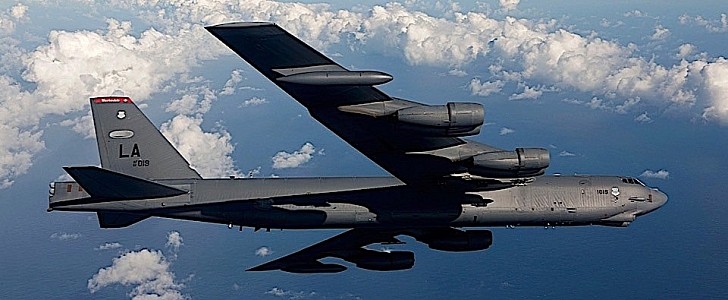You know you’ve hit the jackpot when the strategic bomber you’ve made gets to be 100 years old. And that’s how the U.S. Air Force (USAF) might feel about the mighty B-52 Stratofortress.
Born in the early 1950s in the hands of Boeing, the Stratofortress is one year short of turning 70. It was not long ago though when the plane’s lifespan was extended to at least the middle of this century, and that in effect means this beast will live to be a hundred – the first jet in history to do so.
That announcement also meant defense companies scrambled to get their hands on the contracts for the upgrades that will keep the B-52 relevant for the next three decades. This week one of these contractors, L3Harris, announced it would be in charge of upgrading the aircraft’s electronic warfare self-protection system.
EW for short, this collection of technologies is responsible for shielding from radar and other multiple electronic spectrum threats that could impede the flying machine from performing its duties.
The exact details of the upgrades have not been announced, but as a side note, these systems have been, in the case of the B-52, in the hands of L3Harris for the past 50 years. The new contract, estimated at $947 million over the next ten years, should keep the company on board for the remainder of the plane’s life.
As said, there are efforts being conducted across the board now to update the Stratofortress, but some of its essential capabilities should remain the same.
Weighing as much as 265,000 pounds (120 metric tons) when loaded with bombs, the Boeing aircraft has a wingspan of 185 feet (56 meters). On the wings, Eight Pratt & Whitney turbofan engines, each capable of 17,000 lbs of thrust, are tasked with taking the plane off the ground and keeping it in the air for as much as 8,800 miles (14,100 km), at speeds that can reach 650 mph (1,046 kph).
Since it was introduced, the plane was made in quite a large number for a bomber: roughly 700 units, but just about 10 percent are still being flown.
That announcement also meant defense companies scrambled to get their hands on the contracts for the upgrades that will keep the B-52 relevant for the next three decades. This week one of these contractors, L3Harris, announced it would be in charge of upgrading the aircraft’s electronic warfare self-protection system.
EW for short, this collection of technologies is responsible for shielding from radar and other multiple electronic spectrum threats that could impede the flying machine from performing its duties.
The exact details of the upgrades have not been announced, but as a side note, these systems have been, in the case of the B-52, in the hands of L3Harris for the past 50 years. The new contract, estimated at $947 million over the next ten years, should keep the company on board for the remainder of the plane’s life.
As said, there are efforts being conducted across the board now to update the Stratofortress, but some of its essential capabilities should remain the same.
Weighing as much as 265,000 pounds (120 metric tons) when loaded with bombs, the Boeing aircraft has a wingspan of 185 feet (56 meters). On the wings, Eight Pratt & Whitney turbofan engines, each capable of 17,000 lbs of thrust, are tasked with taking the plane off the ground and keeping it in the air for as much as 8,800 miles (14,100 km), at speeds that can reach 650 mph (1,046 kph).
Since it was introduced, the plane was made in quite a large number for a bomber: roughly 700 units, but just about 10 percent are still being flown.









